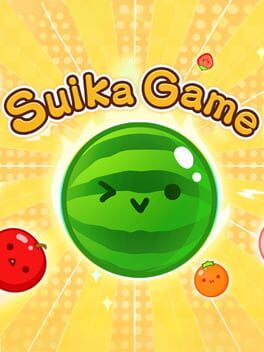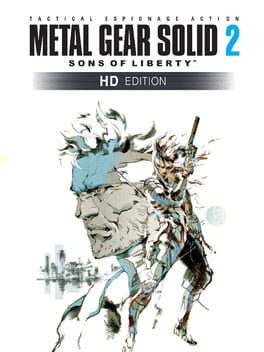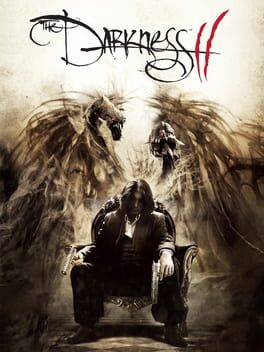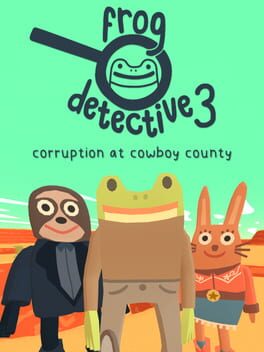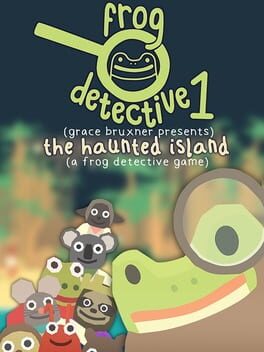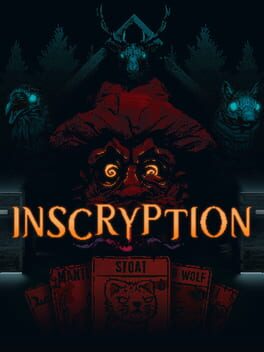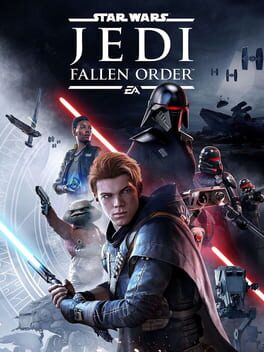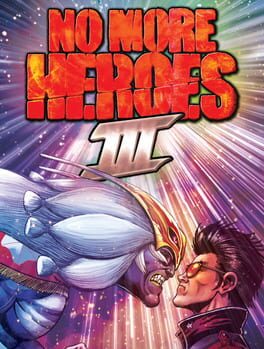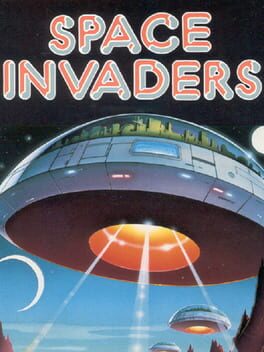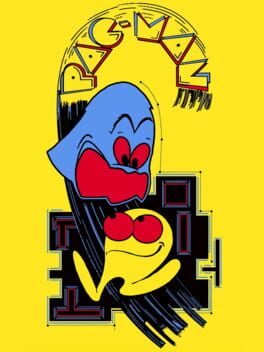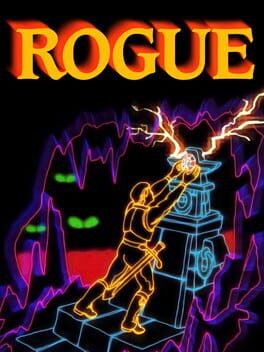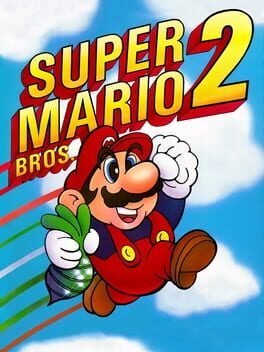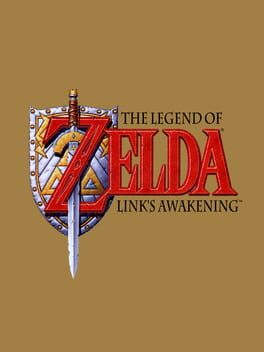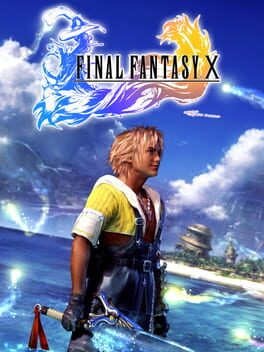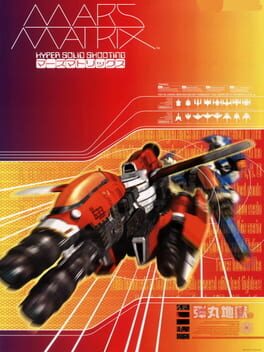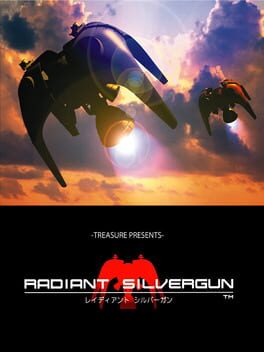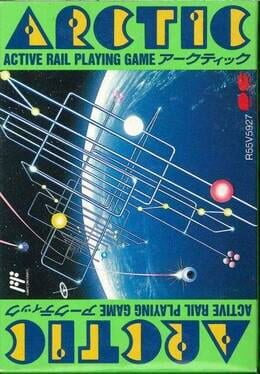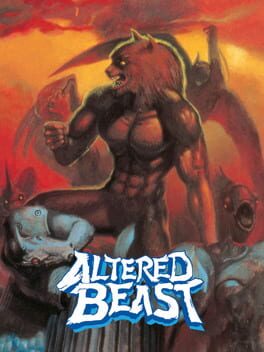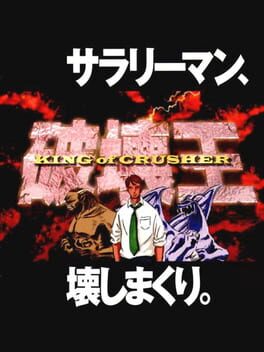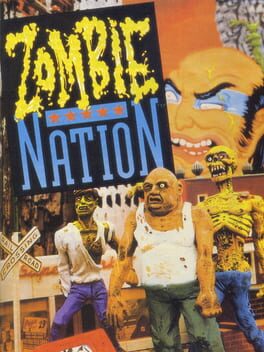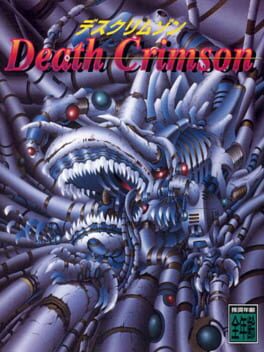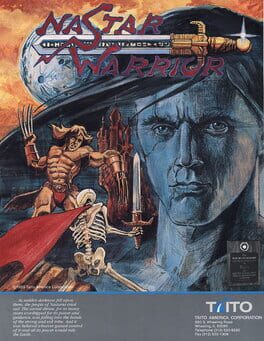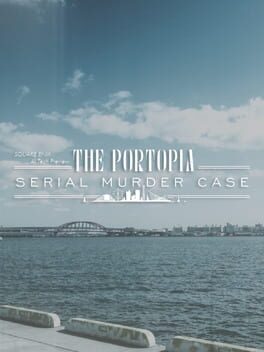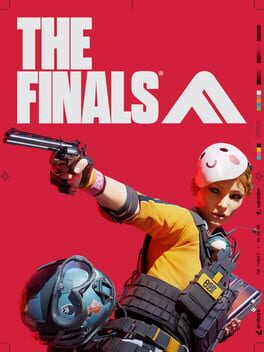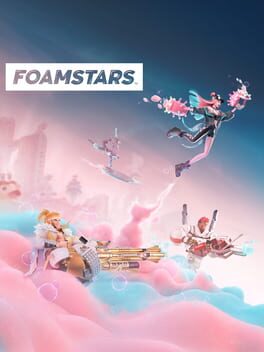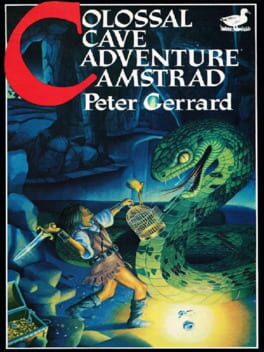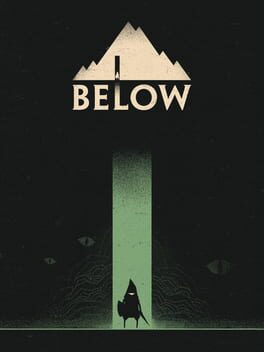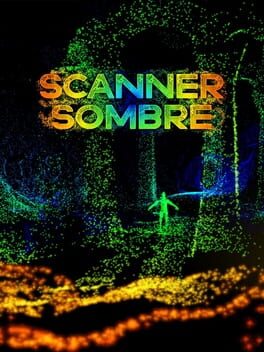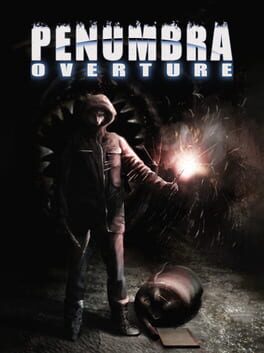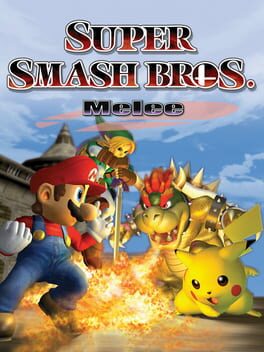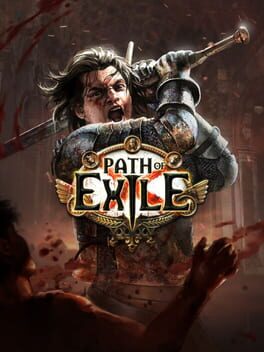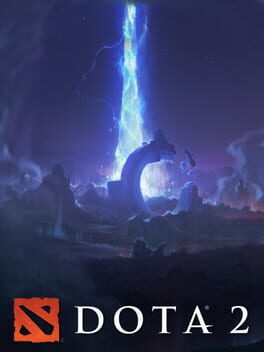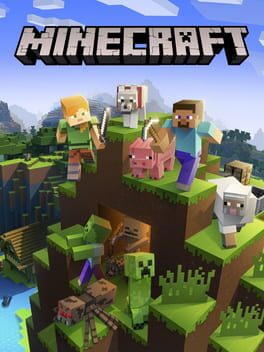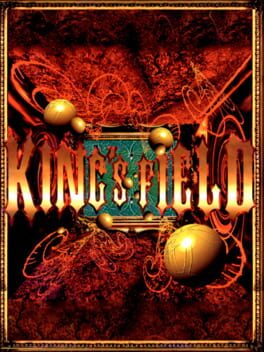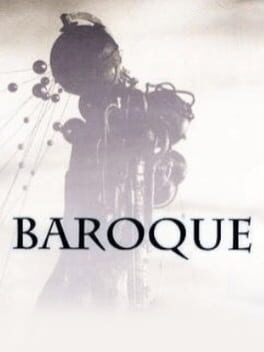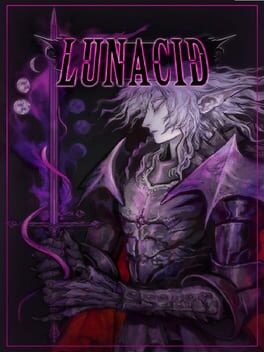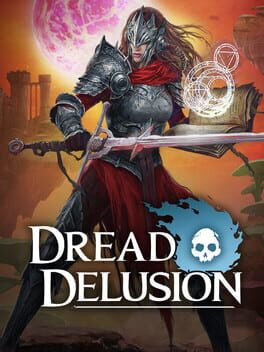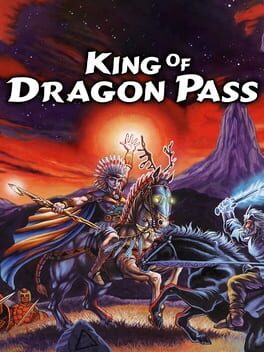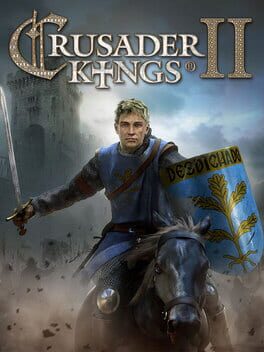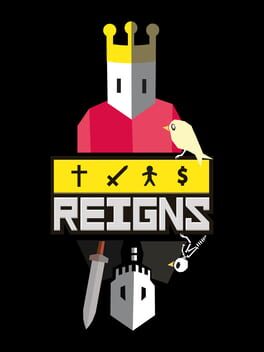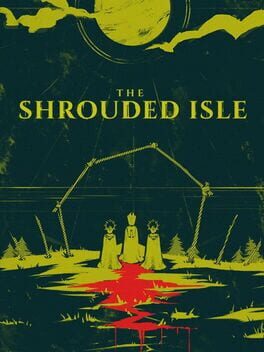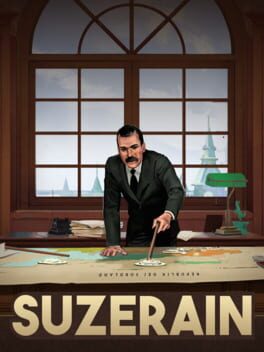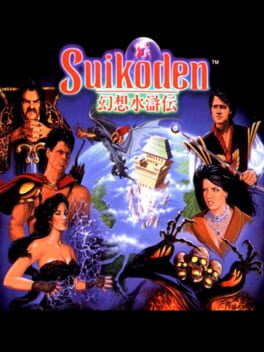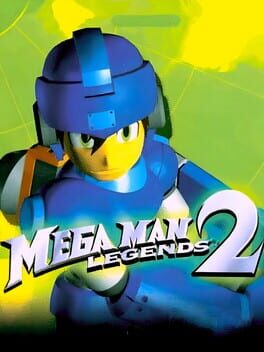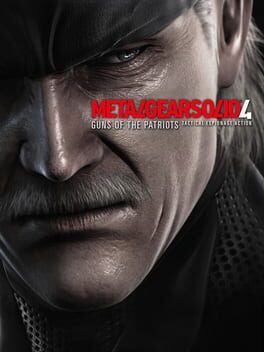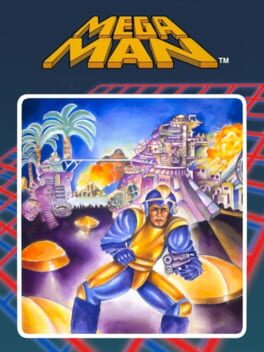kosmzone
51 reviews liked by kosmzone
Suika Game
2021
So you know that Gundum meme of the guy yelling "I'm a genius!" followed immediately by a panel of him in distress shouting "oh no!" Yeah, so repeat that for 5-10 minutes and that's what it feels like to play Suika Game
An incredibly simple game that combines two other incredibly simple games: Tetris and 2048. From Tetris it takes dropping things from the sky and trying to put them in the right position from there, and from 2048 it takes the idea of never removing threats, but making them more manageable by combining two of the same objects to make a slightly bigger object that is overall smaller than the other two alone.
The challenge comes from the fact that as you make bigger and bigger pairings, it becomes harder and harder to pair the biggest items. Combine that with the fact you will just have fruit stuck in the shadow realm, never to be united with other fruit and possibly stopping other fruit from joining is what makes this game so irritatingly addictive. But what makes it really earn its 5/5 from me is the physics of the game. There's never a time in Tetris or 2048 where waiting will help you, but sometimes in Suika game a little patience will be just the thing that turns an "OH NO!" situation into an "I'm a genius!" one.
Suika game is a surprisingly brilliant game. It looks so simple on the surface, but the combination of two already good games and all the little nuances of how fruit moves make the game so addictive. I never thought I'd consider a game about stacking fruit on top of one another to be a certified classic and masterpiece, but here we are. Video games are really incredible sometimes.
An incredibly simple game that combines two other incredibly simple games: Tetris and 2048. From Tetris it takes dropping things from the sky and trying to put them in the right position from there, and from 2048 it takes the idea of never removing threats, but making them more manageable by combining two of the same objects to make a slightly bigger object that is overall smaller than the other two alone.
The challenge comes from the fact that as you make bigger and bigger pairings, it becomes harder and harder to pair the biggest items. Combine that with the fact you will just have fruit stuck in the shadow realm, never to be united with other fruit and possibly stopping other fruit from joining is what makes this game so irritatingly addictive. But what makes it really earn its 5/5 from me is the physics of the game. There's never a time in Tetris or 2048 where waiting will help you, but sometimes in Suika game a little patience will be just the thing that turns an "OH NO!" situation into an "I'm a genius!" one.
Suika game is a surprisingly brilliant game. It looks so simple on the surface, but the combination of two already good games and all the little nuances of how fruit moves make the game so addictive. I never thought I'd consider a game about stacking fruit on top of one another to be a certified classic and masterpiece, but here we are. Video games are really incredible sometimes.
The Darkness II
2012
Inscryption
2021
Early on in my playthrough of Inscryption I made a fatal rookie mistake: Leshy, the deranged and creepy card-opponent-slash-dungeon-master filled his side of the board with birds, and in a moment of panic I sacrificed my Mantis God (which was actually the perfect card in this situation because of its multi-hitting attack) in order to cast a Grizzly (which was a higher-cost card with better stats but ill-suited to dealing with a Zerg Rush-style assault). This one learning experience actually sums up my experience with the entire game, but perhaps I'm getting ahead of myself.
The opening of Inscryption - a roguelike/deckbuilder/escape room game - is about as compelling as any game can possibly get. The vibes are immaculate, flavor and mechanics both score a windmill dunk out of ten, and there is enough randomness in map layouts and events that every run feels different and forces you to think on the fly, but not so much that progression feels gated behind pure dumb luck. If there were one nitpick I could have with it, it's that some mechanics and puzzles are too obtuse for my liking - I get that it goes well the game's mysterious vibe, but there's a bit of a clash between its deliberately cryptic elements and the fact that it's a roguelike that relies of optimal decision making and autosaves all your decisions. Still, nearly everything about it is chef's kiss.
Keeping this as light on spoilers as possible, the game then undergoes a few changes, and to put it kindly... the back half (or even longer, depending on your playstyle) becomes the world's longest instance of "the priest fainted. and then everybody clapped!" I was about to say the game design was confused, but that's not quite right. The writers and designers made exactly the game they wanted to! But while it's admirable how much balls they showed by sticking to their original vision, I also find it painful that they had to sacrifice such a strong opening act in order to build their 'meta creepypasta' narrative, and even sacrificed a proper gameplay climax in favor of a denouement that only serves to tease the player on what could have been. The combination of such a strong opening with such wasted potential (keeping in mind that the wasted potential was a deliberate artistic decision!) is what makes Inscryption possibly one of the hardest games for me to put a star rating on.
But perhaps I should conclude by explaining the anecdote at the start of the review. As I told you
The opening of Inscryption - a roguelike/deckbuilder/escape room game - is about as compelling as any game can possibly get. The vibes are immaculate, flavor and mechanics both score a windmill dunk out of ten, and there is enough randomness in map layouts and events that every run feels different and forces you to think on the fly, but not so much that progression feels gated behind pure dumb luck. If there were one nitpick I could have with it, it's that some mechanics and puzzles are too obtuse for my liking - I get that it goes well the game's mysterious vibe, but there's a bit of a clash between its deliberately cryptic elements and the fact that it's a roguelike that relies of optimal decision making and autosaves all your decisions. Still, nearly everything about it is chef's kiss.
Keeping this as light on spoilers as possible, the game then undergoes a few changes, and to put it kindly... the back half (or even longer, depending on your playstyle) becomes the world's longest instance of "the priest fainted. and then everybody clapped!" I was about to say the game design was confused, but that's not quite right. The writers and designers made exactly the game they wanted to! But while it's admirable how much balls they showed by sticking to their original vision, I also find it painful that they had to sacrifice such a strong opening act in order to build their 'meta creepypasta' narrative, and even sacrificed a proper gameplay climax in favor of a denouement that only serves to tease the player on what could have been. The combination of such a strong opening with such wasted potential (keeping in mind that the wasted potential was a deliberate artistic decision!) is what makes Inscryption possibly one of the hardest games for me to put a star rating on.
But perhaps I should conclude by explaining the anecdote at the start of the review. As I told you
This review contains spoilers
I'm really such a narrative bitch.
BotW has plenty of flaws, but it sings for me because it has such a solid emotional core. Link and Zelda's partial failure 100 years prior drives the emotions of exploring the world, trying to remember a memory that just barely eludes you. It's melancholy, even if it ends in triumph.
Tears of the Kingdom makes similar moves with Zelda's disappearance as well as her ultimate fate. But it's a dramatic retread, we already had a game where Zelda was trapped somewhere else. I truly do not expect Zelda to ever be a completely active agent, but TotK invents new novel ways to be misogynistic (perhaps turning her into an animal that resources can be gathered from was uh... ill-advised). It's also completely bizarre how much this feels like a reboot, with barely any mention of the events of BotW and all the signs of that game's calamity completely gone. I don't feel like I'm asking for a lot when I think several characters should maybe just recognize Link? It gives exploring towns and cities a strange flatness.
There's plenty positive to talk about too. It's incredibly technically impressive and the dungeon and enemy designs are a massive improvement over BotW. The underground areas add some much needed texture. BotW was a world of surfaces and TotK does some cool work accounting for that. It's just a few steps closer to the traditional open world, contraptions aside, and feels all the busier and un-emotive for it.
BotW has plenty of flaws, but it sings for me because it has such a solid emotional core. Link and Zelda's partial failure 100 years prior drives the emotions of exploring the world, trying to remember a memory that just barely eludes you. It's melancholy, even if it ends in triumph.
Tears of the Kingdom makes similar moves with Zelda's disappearance as well as her ultimate fate. But it's a dramatic retread, we already had a game where Zelda was trapped somewhere else. I truly do not expect Zelda to ever be a completely active agent, but TotK invents new novel ways to be misogynistic (perhaps turning her into an animal that resources can be gathered from was uh... ill-advised). It's also completely bizarre how much this feels like a reboot, with barely any mention of the events of BotW and all the signs of that game's calamity completely gone. I don't feel like I'm asking for a lot when I think several characters should maybe just recognize Link? It gives exploring towns and cities a strange flatness.
There's plenty positive to talk about too. It's incredibly technically impressive and the dungeon and enemy designs are a massive improvement over BotW. The underground areas add some much needed texture. BotW was a world of surfaces and TotK does some cool work accounting for that. It's just a few steps closer to the traditional open world, contraptions aside, and feels all the busier and un-emotive for it.
Resident Evil
2002
I thought that getting into this series with 4 would make the fixed camera angle games seem obtuse and difficult to get into, but I'm pleasantly surprised to say that this game is probably even better than 4! The oppressive mood and atmosphere is overwhelming, it's genuinely scary and I feel so tense when playing, and peeling away at the INCREDIBLY designed mansion through Metroidvania-esque progression is so satisfying. Immaculately designed game, I absolutely adored it and can't wait to play the original version of 2 next.
No More Heroes III
2021
”The most detestable habit in modern cinema is the homage. I don’t want to see another goddamn homage in anybody’s movie.” - Orson Welles, speaking at the Cinémathèque Française in 1982
Meaningless referencing is a hallmark of Grasshopper Manufacture video games. In The Silver Case, Tetsugoro Kusabi says a moment in time reminds him of the Rocky movies; Stephan Charbonie name-drops the 1994 FIFA World Cup in Flower, Sun, and Rain; one of my favourite vignettes in The 25th Ward essentially boils down to two detectives being jacked to the tits about going to Starbucks for a caramel macchiato.
I didn’t bother fact-checking the references above for correctness - is that what those references were again? Is that what they actually referred to? I don’t remember. It was something like that, but I’m not sure - I doubt you knew if my references to these references were right, either. You just know that Suda 51 and his staff love to acknowledge things that they like inside things that they’ve created, right? That jarring feeling of hearing a sci-fi psycho killer monologue about the dollar menu at McDonalds, or watching the lyrics from your favourite moody new-wave hit crawl across the LEVEL COMPLETE screen. There’s something special about seeing and hearing a virtual world acknowledge another (real or fictional) world in material terms that we can recognise and appreciate.
References are, of course, an oft-maligned artistic technique - Orson Welles infamously condemned any artist who leaned on referential crutches. Ironically and hypocritically, the Welles filmography is stuffed with creations that he used as vessels of reference to other works of art. F for Fake - one of his best - is not much more than a series of homages to performances and works of art - both real and imagined - that Welles admired. Transformers: The Movie, his final performance, is nothing more than one big reference to a line of plastic Hasbro toys. Despite his trademark bullish blustering, even one of the all-time greats couldn’t avoid contradicting himself on the matter of referencing. Reference is an inevitable part of self-expression that even some of the best directors of adverts for frozen peas simply cannot avoid.
Cantankerous contradictions aside, I imagine most of us feel similarly to Welles about references. As the always-rolling stone of pop culture gathers more and more digital detritus, films, television shows and video games gain an ever-increasing pool of other people’s popular history to lean on - we’ve all no doubt rolled our eyes at a shameless Star Wars parody or Skyrim knee joke a few hundred times in our lives. Captain America’s infamous “I got that reference” line from Avengers has itself become a reference. 2020s culture has essentially become a referential ouroboros, with creators cyclically patting each other on the back with cameos, shoutouts and in-game tshirts.
Filling your own work with someone else’s work is often just a tedious exercise that outwardly effuses appreciation for another artist, but really just serves as a way for you to self-congratulate and show people what you and they already know. Despite the fact that all these shoutouts are essentially made unto a cultural void, there are still some references being made today that can become special to you or me. After all, we still hold some level of care for the pieces that make up each other's identities.
Since playing Travis Strikes Again earlier this year, I’ve not been able to shake the memory of a moment that held an eerie serendipity for me. It happened during one of the game’s visual novel detours - in pursuit of a Death Ball, Travis is sent to a festival in Split, Croatia. Whoa! In 2019, the year TSA launched, I went to a festival in Split, Croatia! And then, not long after that, Travis talks about how his handler/girlfriend/wife is really into SUP (stand up paddleboard) yoga right now - my handler/girlfriend/wife is really into SUP (stand up paddleboard) yoga right now! What are the chances, eh?! Travis is just like me! Are we on the same journey? If we read Travis as an extension of Suda 51, is Mr. Goichi Suda himself on that journey with me, too?
Such is the power of a meaningless reference. Two throwaway lines with no broader meaning or significance can suddenly bring a viewer/consumer deeper into an artist/character’s world by giving them something in common - but only for the people who rolled the same numbers on the die of life and culture that the creator did. A true artist, Orson would likely argue, could create meaning through depiction of a universal human experience - one that doesn’t rely on creator and observer both owning the same DVDs or liking the same sports team.
I don’t think I’m alone in seeing superficial-referential similarities between myself and Travis Touchdown. In the wake of No More Heroes 3’s launch, I read a tweet about the game that was making the rounds on KamuiNet - not only did it praise the game for allowing Travis, Shinobu and Bad Girl to age in line with the real-life release dates of the No More Heroes video games, it also suggested that it was refreshing to see a creation where older characters can let their geek-freak flags fly. It’s cool that a 40 year old man can like Chr’s Cunterttack; it’s cool to drink beers on your couch and watch moe anime; it’s cool to be a fully grown adult and still swing a toy lightsaber around; uhhh… and more of that sort of thing (I wager the tweeter would love Kevin Smith’s Clerks 2). I’d reference the tweet, but I don’t know where it is now - hopefully this allusion is enough to keep you in the loop, even if I have likely muddied the specifics once again.
So - was that tweet made with tongue planted firmly in cheek? It’s hard to say. You’d assume a fan of No More Heroes would think twice before praising a game for permitting revelry in stunted consumerism, but hey - I know of people who own replicas of Travis Touchdown’s jacket. Suda himself retweeted a dude who has the beam katana tattooed all the way down his calf. Some people love these games without thinking too hard about all of it. And that’s fine! Whether the tweet was intentionally ironic or not, though, I still think it’s a worthy observation that drives its Akira motorcycle (omg it does The Slide!! sick reference!!!) quite close to what No More Heroes 3 is hopefully trying to truthfully achieve in its own scrappy texture-popping, frame-hitching, wall-clipping little way.
I won’t waste too much time recapping how we got to No More Heroes 3 (you’re on Backloggd, after all, and can read excellent Top Reviews for each game in the series) but it’s worth considering what each NMH game was really about. The original game in particular, as it’s NMH3’s closest relative - No More Heroes 3 is to No More Heroes 1 as The Force Awakens was to A New Hope, to make another meaningless reference. A reboot and retread of well-worn ground that revels in all the superficial signifiers we’ve come to expect from each series. Revived from the dead with an injection of Disney/Marvelous cash and creatively controlled for a whole new generation. With each re-awakening, the main characters are now older and not necessarily any wiser, reliving glory days by referencing all that Good Shit you loved so much countless decades ago. Hey… They even both have blue lightsabers! What a reference!
Surface-level symbology and parallels aside, probably the most important thing to keep in mind about No More Heroes 1 while playing No More Heroes 3 is its pop-punk meditation on consumer identity and how it was essentially used to trap Travis in someone else’s violent cycle of gig economics (again: read those Top Reviews!). It doesn’t even matter if he’s aware of the grind he’s trapped in and why it sucks - you and Travis still have to participate in your literal or figurative lawn-mowing in order to afford your new video game t-shirts. And this was before the inescapable collective consciousness of the 2.0 and 3.0 Internets forced us all to look at and buy the same things all the time. Ultimately, the only way Travis could escape his perpetual consumer torment was to go live in the woods and play someone else’s video game (fuck!!! a reference!!) all day instead. And even then, the past he wasn’t able to kill (in the form of a reference to a prior NMH game) still found him and brought him back to the modern metropolis.
When looked at through a lens crafted in the present day, the original No More Heroes couldn't have dropped at a better time. It released the same year as the first iPhone and the '07 Global Financial Crash, and just a few months later, Iron Man hit cinemas. Can you think of three bigger social and cultural touchstones for the 2010/20s era? NMH was the final checkpoint before the end of nerd culture's Bronze Age and the beginning of its Iron (Man) Age. Not a smartphone in sight. Just NEETs living in the moe-ment.
It may just be me attributing my own meaning to a personal period of time, of course - I played the first game as an unemployed 18 year old dweeb hiding out in his parents' back room, and I'm now a 31 year old dweeb with a mortgage and a (furry) child - but it does feel like there's been a momentous paradigm shift in The Culture since 2007. When I went to university, my peers at the pub would turn up their noses when I talked about comics, video games and anime - they were fringe, outsider topics that swam in channels separate from the mainstream. Nowadays, everyone I know knows their Monkey Balls from their Dragon Balls. My own grandmother congratulated me for putting out a Doom wad, for fuck's sake! Make a Super Mario reference in 2021, and the chances are high that your own mother would probably know what you're talking about. Whether they like it or not, everyone is at least partially immersed in this grand nouveau-nerd culture that capital has kindly crafted for us to consume. It's no coincidence that Damon Riccitiello, landlord maximus and CEO of Not-EA Games, is Earth's ambassador for an extraterrestrial apocalypse.
And that is the main thrust of what I think No More Heroes 3 is trying to drive itself toward. Despite the introspective events of Travis Strikes Again, Travis Touchdown returns to his mainline series in a relatively unscathed blaze of geeky glory. Like that tweeter I referenced earlier said, the 40 year old Travis is now definitively a child walking in the realm of adults. He even has 2.5 children and a wife - the all-time classic societal markers of adulthood - but still somehow lives alone with his punk IPAs and wrestling figures, decorating his motel room with anime witch girl posters and collecting trading cards for an 80s video game that he watches obsessively on YouTube. Not exactly society's Dad of the Year material. Is that his fault, though? And is that necessarily a bad thing? I feel like NMH3 is trying to explore these questions without being particularly confrontational or condemnational about them. Grasshopper are holding up a mirror in your peripheral vision while you play their latest game; they're showing you their painting of that guy at your job who wears his Joker t-shirt three times a week and takes his kids to Disneyland so that he and his wife can go see the Millennium Falcon. Is Travis that guy?
Travis is probably the most frequently and meticulously discussed video game character on Backloggd. If ever there was a meme to sum up the whole site, it would likely be that "OMG! THATS ME!" guy, looking at a picture of Travis Touchdown (alongside his close friends Tokio and Sumio). The type of person who likes Suda 51 games and posts on Backloggd is unlikely to clap when Captain America references Fortnite in a Marvel movie, though. They’re probably not going to laugh when Elon Musk acknowledges Star Trek II: The Wrath of Khan in an episode of Rick and Morty. A Neon Genesis Evangelion reference in YIIK: A Post-Modern RPG is not gonna delight them. But they’ll still play these games, watch these movies, see these shows, and then seek out a social blogging website where they can share their disdain for said references and assign an appropriate star rating - as if that absolves them of their participation in said culture. What video game t-shirt did you wear in Travis Strikes Again, by the way? And how thick is that line of the web that separates you from that guy in the Joker t-shirt? How deep does your appreciation of the culture you appreciate really go? Could you pronounce "itadakimasu" (love the lyrics on that song!) any better than Travis does, despite playing all those Japanese video games of yours?
I say we're all "participating" in this international smorgasbord of culture-lite, but I think none of us are really all that free to choose how we interact with these things or allow ourselves to be molded by them, short of renting a trailer in the forest. Our friends chat about it, our mutuals snark about it, our coworkers use it for small talk. I didn't watch Loki, but it came up a lot in my daily team meetings. I know what happened in the show, even though I didn't want to think about it. I've played Call of Duty: Warzone with my buds, despite the fact I regularly condemn the Activision war machine. You gotta do what you gotta do. I saw Spider-Man: Far From Home because it's what my friends wanted to do one day. It wasn't a big deal. It's all a common ground we can embrace each other upon. In No More Heroes 3, one of the only ways Travis can relate to a bereaved Bad Girl is by barging into her bedroom and telling her to watch F-te/St-y N-ght or whatever that was. Meaningless references emit powerful psychoframes that connect us.
Meaningless referencing is a hallmark of Grasshopper Manufacture video games, and No More Heroes 3 is the platinum-stamped standard-bearer of that hallmark. You could even argue the gameplay itself (which I didn't even talk about here, lol) is just a series of references - you boot up your beam katana to the classic NMH beat, pull off various suplexes from the annals of NJPW and WWE history, drive the Akira bike down the highway, fly around in a knock-off Full Armor Unicorn Gundam, and mow lawns because you mowed lawns in the original No More Heroes. There's very little here that's of original invention, and Orson Welles, were he alive today and gaming his big ass off, would fucking hate that. It's all goddamn homage, all the goddamn time, you goddamn fuckhead. But in some weird way, there's an artistic bravery in building a game that's entirely about other people's work and how that makes you feel. If you can have a podcast about Takashi Miike, why can't you have a video game about Takashi Miike?
No More Heroes asked the player two questions - “Is this you?” and “Does it feel good?”
No More Heroes 3 tells the player two things - “This is you!” and “Man, does it feel good!”
Those two new statements might not end with question marks, but I think they're intended to provoke you. Whether you like it or not, this is the way that it is.
Can you do anything about it?
Can Travis (that's me!) really change the future?
Is this really the end of history?
Is this really the end?
No more heroes.
Meaningless referencing is a hallmark of Grasshopper Manufacture video games. In The Silver Case, Tetsugoro Kusabi says a moment in time reminds him of the Rocky movies; Stephan Charbonie name-drops the 1994 FIFA World Cup in Flower, Sun, and Rain; one of my favourite vignettes in The 25th Ward essentially boils down to two detectives being jacked to the tits about going to Starbucks for a caramel macchiato.
I didn’t bother fact-checking the references above for correctness - is that what those references were again? Is that what they actually referred to? I don’t remember. It was something like that, but I’m not sure - I doubt you knew if my references to these references were right, either. You just know that Suda 51 and his staff love to acknowledge things that they like inside things that they’ve created, right? That jarring feeling of hearing a sci-fi psycho killer monologue about the dollar menu at McDonalds, or watching the lyrics from your favourite moody new-wave hit crawl across the LEVEL COMPLETE screen. There’s something special about seeing and hearing a virtual world acknowledge another (real or fictional) world in material terms that we can recognise and appreciate.
References are, of course, an oft-maligned artistic technique - Orson Welles infamously condemned any artist who leaned on referential crutches. Ironically and hypocritically, the Welles filmography is stuffed with creations that he used as vessels of reference to other works of art. F for Fake - one of his best - is not much more than a series of homages to performances and works of art - both real and imagined - that Welles admired. Transformers: The Movie, his final performance, is nothing more than one big reference to a line of plastic Hasbro toys. Despite his trademark bullish blustering, even one of the all-time greats couldn’t avoid contradicting himself on the matter of referencing. Reference is an inevitable part of self-expression that even some of the best directors of adverts for frozen peas simply cannot avoid.
Cantankerous contradictions aside, I imagine most of us feel similarly to Welles about references. As the always-rolling stone of pop culture gathers more and more digital detritus, films, television shows and video games gain an ever-increasing pool of other people’s popular history to lean on - we’ve all no doubt rolled our eyes at a shameless Star Wars parody or Skyrim knee joke a few hundred times in our lives. Captain America’s infamous “I got that reference” line from Avengers has itself become a reference. 2020s culture has essentially become a referential ouroboros, with creators cyclically patting each other on the back with cameos, shoutouts and in-game tshirts.
Filling your own work with someone else’s work is often just a tedious exercise that outwardly effuses appreciation for another artist, but really just serves as a way for you to self-congratulate and show people what you and they already know. Despite the fact that all these shoutouts are essentially made unto a cultural void, there are still some references being made today that can become special to you or me. After all, we still hold some level of care for the pieces that make up each other's identities.
Since playing Travis Strikes Again earlier this year, I’ve not been able to shake the memory of a moment that held an eerie serendipity for me. It happened during one of the game’s visual novel detours - in pursuit of a Death Ball, Travis is sent to a festival in Split, Croatia. Whoa! In 2019, the year TSA launched, I went to a festival in Split, Croatia! And then, not long after that, Travis talks about how his handler/girlfriend/wife is really into SUP (stand up paddleboard) yoga right now - my handler/girlfriend/wife is really into SUP (stand up paddleboard) yoga right now! What are the chances, eh?! Travis is just like me! Are we on the same journey? If we read Travis as an extension of Suda 51, is Mr. Goichi Suda himself on that journey with me, too?
Such is the power of a meaningless reference. Two throwaway lines with no broader meaning or significance can suddenly bring a viewer/consumer deeper into an artist/character’s world by giving them something in common - but only for the people who rolled the same numbers on the die of life and culture that the creator did. A true artist, Orson would likely argue, could create meaning through depiction of a universal human experience - one that doesn’t rely on creator and observer both owning the same DVDs or liking the same sports team.
I don’t think I’m alone in seeing superficial-referential similarities between myself and Travis Touchdown. In the wake of No More Heroes 3’s launch, I read a tweet about the game that was making the rounds on KamuiNet - not only did it praise the game for allowing Travis, Shinobu and Bad Girl to age in line with the real-life release dates of the No More Heroes video games, it also suggested that it was refreshing to see a creation where older characters can let their geek-freak flags fly. It’s cool that a 40 year old man can like Chr’s Cunterttack; it’s cool to drink beers on your couch and watch moe anime; it’s cool to be a fully grown adult and still swing a toy lightsaber around; uhhh… and more of that sort of thing (I wager the tweeter would love Kevin Smith’s Clerks 2). I’d reference the tweet, but I don’t know where it is now - hopefully this allusion is enough to keep you in the loop, even if I have likely muddied the specifics once again.
So - was that tweet made with tongue planted firmly in cheek? It’s hard to say. You’d assume a fan of No More Heroes would think twice before praising a game for permitting revelry in stunted consumerism, but hey - I know of people who own replicas of Travis Touchdown’s jacket. Suda himself retweeted a dude who has the beam katana tattooed all the way down his calf. Some people love these games without thinking too hard about all of it. And that’s fine! Whether the tweet was intentionally ironic or not, though, I still think it’s a worthy observation that drives its Akira motorcycle (omg it does The Slide!! sick reference!!!) quite close to what No More Heroes 3 is hopefully trying to truthfully achieve in its own scrappy texture-popping, frame-hitching, wall-clipping little way.
I won’t waste too much time recapping how we got to No More Heroes 3 (you’re on Backloggd, after all, and can read excellent Top Reviews for each game in the series) but it’s worth considering what each NMH game was really about. The original game in particular, as it’s NMH3’s closest relative - No More Heroes 3 is to No More Heroes 1 as The Force Awakens was to A New Hope, to make another meaningless reference. A reboot and retread of well-worn ground that revels in all the superficial signifiers we’ve come to expect from each series. Revived from the dead with an injection of Disney/Marvelous cash and creatively controlled for a whole new generation. With each re-awakening, the main characters are now older and not necessarily any wiser, reliving glory days by referencing all that Good Shit you loved so much countless decades ago. Hey… They even both have blue lightsabers! What a reference!
Surface-level symbology and parallels aside, probably the most important thing to keep in mind about No More Heroes 1 while playing No More Heroes 3 is its pop-punk meditation on consumer identity and how it was essentially used to trap Travis in someone else’s violent cycle of gig economics (again: read those Top Reviews!). It doesn’t even matter if he’s aware of the grind he’s trapped in and why it sucks - you and Travis still have to participate in your literal or figurative lawn-mowing in order to afford your new video game t-shirts. And this was before the inescapable collective consciousness of the 2.0 and 3.0 Internets forced us all to look at and buy the same things all the time. Ultimately, the only way Travis could escape his perpetual consumer torment was to go live in the woods and play someone else’s video game (fuck!!! a reference!!) all day instead. And even then, the past he wasn’t able to kill (in the form of a reference to a prior NMH game) still found him and brought him back to the modern metropolis.
When looked at through a lens crafted in the present day, the original No More Heroes couldn't have dropped at a better time. It released the same year as the first iPhone and the '07 Global Financial Crash, and just a few months later, Iron Man hit cinemas. Can you think of three bigger social and cultural touchstones for the 2010/20s era? NMH was the final checkpoint before the end of nerd culture's Bronze Age and the beginning of its Iron (Man) Age. Not a smartphone in sight. Just NEETs living in the moe-ment.
It may just be me attributing my own meaning to a personal period of time, of course - I played the first game as an unemployed 18 year old dweeb hiding out in his parents' back room, and I'm now a 31 year old dweeb with a mortgage and a (furry) child - but it does feel like there's been a momentous paradigm shift in The Culture since 2007. When I went to university, my peers at the pub would turn up their noses when I talked about comics, video games and anime - they were fringe, outsider topics that swam in channels separate from the mainstream. Nowadays, everyone I know knows their Monkey Balls from their Dragon Balls. My own grandmother congratulated me for putting out a Doom wad, for fuck's sake! Make a Super Mario reference in 2021, and the chances are high that your own mother would probably know what you're talking about. Whether they like it or not, everyone is at least partially immersed in this grand nouveau-nerd culture that capital has kindly crafted for us to consume. It's no coincidence that Damon Riccitiello, landlord maximus and CEO of Not-EA Games, is Earth's ambassador for an extraterrestrial apocalypse.
And that is the main thrust of what I think No More Heroes 3 is trying to drive itself toward. Despite the introspective events of Travis Strikes Again, Travis Touchdown returns to his mainline series in a relatively unscathed blaze of geeky glory. Like that tweeter I referenced earlier said, the 40 year old Travis is now definitively a child walking in the realm of adults. He even has 2.5 children and a wife - the all-time classic societal markers of adulthood - but still somehow lives alone with his punk IPAs and wrestling figures, decorating his motel room with anime witch girl posters and collecting trading cards for an 80s video game that he watches obsessively on YouTube. Not exactly society's Dad of the Year material. Is that his fault, though? And is that necessarily a bad thing? I feel like NMH3 is trying to explore these questions without being particularly confrontational or condemnational about them. Grasshopper are holding up a mirror in your peripheral vision while you play their latest game; they're showing you their painting of that guy at your job who wears his Joker t-shirt three times a week and takes his kids to Disneyland so that he and his wife can go see the Millennium Falcon. Is Travis that guy?
Travis is probably the most frequently and meticulously discussed video game character on Backloggd. If ever there was a meme to sum up the whole site, it would likely be that "OMG! THATS ME!" guy, looking at a picture of Travis Touchdown (alongside his close friends Tokio and Sumio). The type of person who likes Suda 51 games and posts on Backloggd is unlikely to clap when Captain America references Fortnite in a Marvel movie, though. They’re probably not going to laugh when Elon Musk acknowledges Star Trek II: The Wrath of Khan in an episode of Rick and Morty. A Neon Genesis Evangelion reference in YIIK: A Post-Modern RPG is not gonna delight them. But they’ll still play these games, watch these movies, see these shows, and then seek out a social blogging website where they can share their disdain for said references and assign an appropriate star rating - as if that absolves them of their participation in said culture. What video game t-shirt did you wear in Travis Strikes Again, by the way? And how thick is that line of the web that separates you from that guy in the Joker t-shirt? How deep does your appreciation of the culture you appreciate really go? Could you pronounce "itadakimasu" (love the lyrics on that song!) any better than Travis does, despite playing all those Japanese video games of yours?
I say we're all "participating" in this international smorgasbord of culture-lite, but I think none of us are really all that free to choose how we interact with these things or allow ourselves to be molded by them, short of renting a trailer in the forest. Our friends chat about it, our mutuals snark about it, our coworkers use it for small talk. I didn't watch Loki, but it came up a lot in my daily team meetings. I know what happened in the show, even though I didn't want to think about it. I've played Call of Duty: Warzone with my buds, despite the fact I regularly condemn the Activision war machine. You gotta do what you gotta do. I saw Spider-Man: Far From Home because it's what my friends wanted to do one day. It wasn't a big deal. It's all a common ground we can embrace each other upon. In No More Heroes 3, one of the only ways Travis can relate to a bereaved Bad Girl is by barging into her bedroom and telling her to watch F-te/St-y N-ght or whatever that was. Meaningless references emit powerful psychoframes that connect us.
Meaningless referencing is a hallmark of Grasshopper Manufacture video games, and No More Heroes 3 is the platinum-stamped standard-bearer of that hallmark. You could even argue the gameplay itself (which I didn't even talk about here, lol) is just a series of references - you boot up your beam katana to the classic NMH beat, pull off various suplexes from the annals of NJPW and WWE history, drive the Akira bike down the highway, fly around in a knock-off Full Armor Unicorn Gundam, and mow lawns because you mowed lawns in the original No More Heroes. There's very little here that's of original invention, and Orson Welles, were he alive today and gaming his big ass off, would fucking hate that. It's all goddamn homage, all the goddamn time, you goddamn fuckhead. But in some weird way, there's an artistic bravery in building a game that's entirely about other people's work and how that makes you feel. If you can have a podcast about Takashi Miike, why can't you have a video game about Takashi Miike?
No More Heroes asked the player two questions - “Is this you?” and “Does it feel good?”
No More Heroes 3 tells the player two things - “This is you!” and “Man, does it feel good!”
Those two new statements might not end with question marks, but I think they're intended to provoke you. Whether you like it or not, this is the way that it is.
Can you do anything about it?
Can Travis (that's me!) really change the future?
Is this really the end of history?
Is this really the end?
No more heroes.
23 lists liked by kosmzone
by GameMakersTK |
100 Games
by letshugbro |
25 Games
by vehemently |
41 Games
by vehemently |
56 Games
by NutzBerzerk |
4 Games
by vehemently |
25 Games
by vehemently |
22 Games
by vehemently |
31 Games
by Drax |
152 Games
